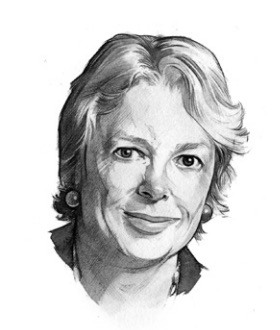This report outlines the evolving landscape of technology law and intellectual property as reflected in academic and legal discourse over several decades.
1989-1995: Defining Software IP and Digital Reproduction
This initial period reveals the fundamental struggles in applying intellectual property law to the then-nascent world of software and digital information. A central theme was the "look and feel" of software user interfaces, with titles like "Why the look and feel of software user interfaces should not be protected by copyright law" (1989), "Survey on the Look and Feel Lawsuits" (1990), and "The Ups and Downs of Look and Feel" (1993) highlighting ongoing litigation and debate. Relatedly, the patentability of software algorithms also drew attention, as seen in "Should Program Algorithms be Patented?" (1990).
As digital media began to take shape, questions around information access and copyright reproduction became prominent. The concept of "Digital Libraries" appeared early on ("Copyright and Digital Libraries," 1995), foreshadowing future mass digitization efforts. The critical doctrine of "fair use" also began to be explored in the digital context, with titles such as "Copyright's Fair Use Doctrine and Digital Data" (1994) and "Computer Programs and Copyright's Fair Use Doctrine" (1993) indicating its increasing relevance. Broader philosophical questions like "Is Information Property?" (1991) also emerged, setting the stage for decades of debate.
1996-2000: Expanding IP's Reach in the Digital Age
The latter half of the 1990s saw intellectual property law grappling with the expanding "Global Information Economy" ("Intellectual Property Rights and the Global Information Economy," 1996). The focus broadened from specific software elements to include "Legal Protection for Database Contents" (1996) and the regulation of technologies designed to protect copyrighted works, as indicated by "Regulation of Technologies to Protect Copyrighted Works" (1996).
A notable shift was the increasing emphasis on licensing models, with questions like "Does Information Really Have to be Licensed?" (1998) appearing. Concerns about "Anticircumvention Regulations" also started to surface by the end of the decade, with "Why the Anticircumvention Regulations Need Revision" (1999) suggesting early friction. This period marked a move towards more overt technological and contractual controls over digital content, setting the stage for future debates over digital rights management.
2001-2006: DRM, Piracy Battles, and Patent System Under Scrutiny
This period was characterized by intense legal battles over digital piracy and the widespread adoption, and subsequent challenge, of Digital Rights Management (DRM). Titles like "DRM {and, or, vs.} the law" (2003) illustrate the tension, while "Reverse engineering under siege" (2002) pointed to how DRM technologies often restricted traditional fair use or innovation. The landmark MGM v. Grokster case, concerning peer-to-peer file sharing, dominated the discussion, with multiple articles exploring "What's at stake in MGM v. Grokster?" (2004) and whether "Did MGM really win the Grokster case?" (2005). This era saw significant focus on the "Sony safe harbor" rule, which protects technology providers from secondary liability, as evidenced by "The Supreme Court revisits the Sony safe harbor" (2005) and "Legislative challenges to the Sony safe harbor rule" (2005).
Beyond copyright, calls for "Why reform the U.S. patent system?" (2004) gained traction, indicating growing concerns about patent quality and litigation. This period thus marked a turning point where broad legislative and judicial actions were actively pursued to shape the digital content landscape.
2007-2013: The Software Patent and Mass Digitization Debates
The late 2000s and early 2010s were largely defined by two major, interconnected debates: the patentability of software and business methods, and the legal implications of mass digitization projects. Questions such as "Software patents and the metaphysics of Section 271(f)" (2007), "Are business methods patentable?" (2009), and "Is software patentable?" (2013) demonstrate the ongoing legal uncertainty and reform efforts concerning software patents. Indeed, "Patent reform through the courts" (2007) and "Only technological processes are patentable" (2010) highlight the judicial role in shaping this landscape.
Simultaneously, the ambitious Google Book Search settlement became a central topic in copyright law, with titles like "The dead souls of the Google book search settlement" (2009), "Should the Google book settlement be approved?" (2010), and "Why the Google book settlement failed: and what comes next?" (2011) chronicling its tumultuous journey. This era also saw the emergence of the "API copyrightability" debate, notably with "Oracle v. Google: are APIs copyrightable?" (2012), a question that would continue for years. Discussions also touched upon the ownership of software ("Do you own the software you buy?" 2011) and online piracy ("Can online piracy be stopped by laws?" 2012).
2014-2017: Fair Use Triumphs, Design Patent Wars, and Patent Retreat
This period saw some major judicial resolutions and shifts in intellectual property focus. A significant continuity from the previous period was the ongoing importance and ultimate resolution of the Oracle v. Google fair use case, where "Fair use prevails in Oracle v. Google" (2016), reinforcing the importance of this doctrine for software development. This also followed earlier discussions of "Mass digitization as fair use" (2014), further solidifying its application in new contexts.
A new prominent theme was the "design patent wars," largely driven by the high-profile Apple v. Samsung litigation. Titles like "Apple v. Samsung and the upcoming design patent wars?" (2016) and "Supreme Court on design patent damages in Samsung v. Apple" (2017) indicate the heightened attention on product aesthetics and their protection. Concurrently, software patents saw a notable decline in viability, as suggested by "Software patents are falling down" (2015), representing a clear shift from the previous decade's intense focus on their expansion.
As the digital economy matured, the conversation shifted towards broader regulatory frameworks, particularly from Europe, and the emergence of new digital rights. The "EU's controversial digital single market directive" (2018) and its finalization as "Europe's controversial digital copyright directive finalized" (2019) signaled a more assertive stance on platform responsibility and copyright in the EU. This extended to "the push for stricter rules for internet platforms" (2021) and concerns over "Copyright's online service providers safe harbors under siege" (2020). API copyrights also continued to be revisited ("API copyrights revisited," 2019).
Beyond regulation, this period saw the rise of discussions around user rights and technological freedom. "An emergent legal right to repair electronic devices" (2022) highlights a growing consumer-centric movement. Simultaneously, the legal implications of fundamental digital technologies like virtualization and emulation ("Apple's challenge to virtualization software," 2022; "Copyright implications of emulation programs," 2022) came into focus, reflecting deeper questions about software ownership and interoperability. This period also marked the first explicit mention of "AI authorship?" (2020), hinting at the coming wave of AI-related legal challenges.
2023-2025: The Generative AI Era and Platform Content Debates
The most recent period is overwhelmingly dominated by the rapid rise and legal ramifications of Generative Artificial Intelligence (AI). Multiple titles directly address "Legal Challenges to Generative AI, Part I" (2023) and "Part II" (2023), as well as the U.S. Copyright Office's active engagement with the technology ("U.S. Copyright Office's Questions about Generative AI," 2024). The discussion quickly moved to practical legal remedies, as seen in "How to Think about Remedies in the Generative AI Copyright Cases" (2024).
This new AI focus represents a significant shift, creating novel intellectual property challenges that build upon previous debates about data mining ("Text and data mining of in-copyright works: is it legal?" 2021) and AI authorship. Alongside AI, the role of social media platforms as content gatekeepers also came into sharp focus, with "Do Social Media Platforms Have Free Speech Rights to 'Censor' Conservatives?" (2024) indicating a growing public debate over content moderation and algorithmic power, also linked to "A Legal Challenge to Algorithmic Recommendations" (2023). Finally, the emerging legislative efforts to regulate AI are highlighted by "California's AI Act Vetoed" (2025), showing the speed at which policy is attempting to catch up with technological advancement.





